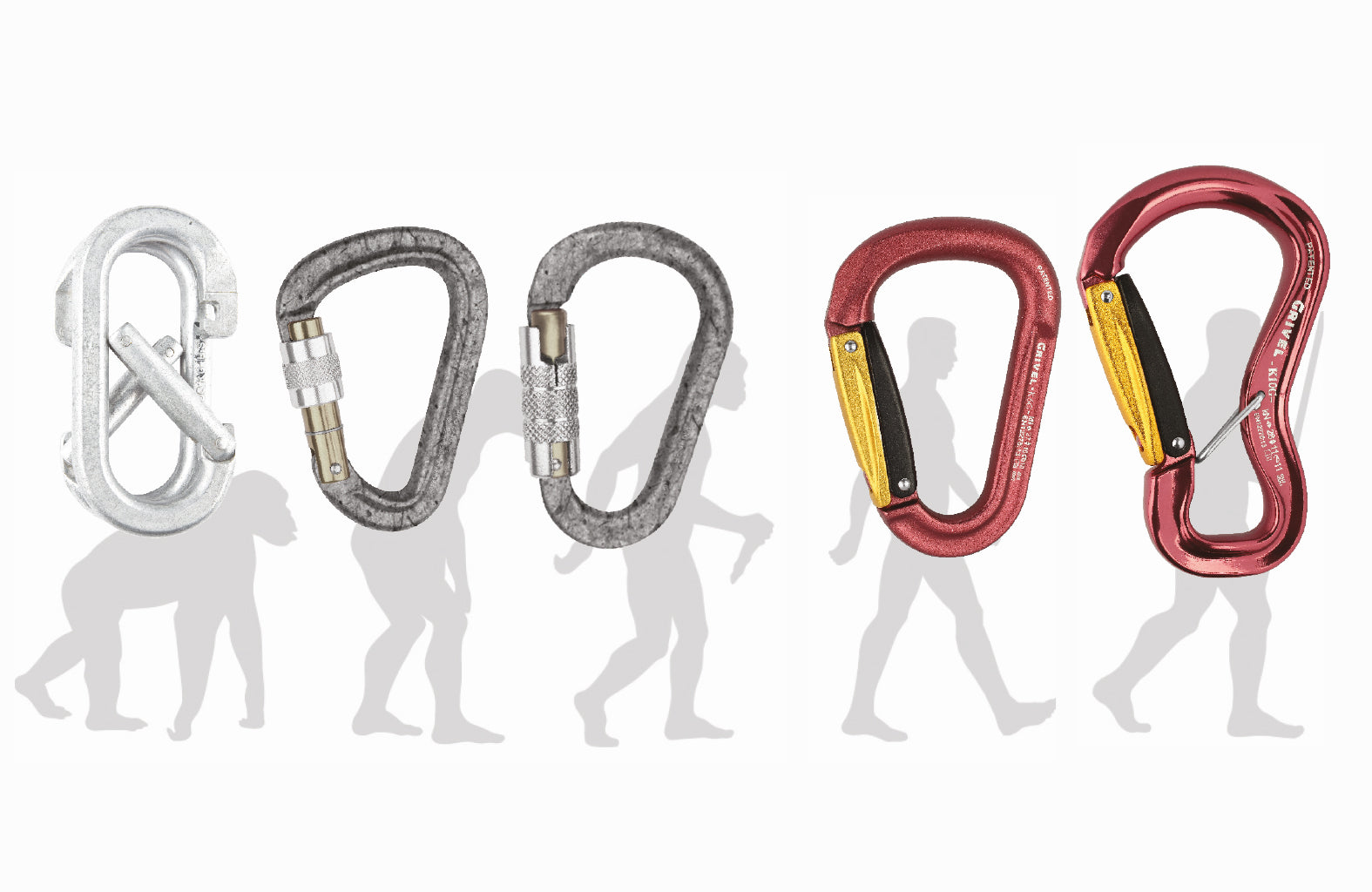
The history of carabiners
Published on 02/10/2019

Otto Herzog (1888-1964) was a German climber and inventor; he got his nickname “Rambo” 70 years before the Silvester Stallone’s movie. In 1910 he had seen a fire brigade whose men wore pear-sharped karabiners on their belts (or “karabinerhaken”: hook for carabiner), and quickly adopted the gear on a few practice routes, proposing it to his friend Hans Dülfer and Hans Fiechtl.
Dülfer used them on the east façade of Fleishbank in 1912, and from that moment it became the indispensable link between rope and piton: a big step for climbing and a major evolution in the safety possibilities of the climber.

Before “Rambo” first conceived using carabiners, climbers had only two options for connecting their ropes to protection: tie the rope and protection together, or untie and run the rope directly through the gear. Neither option was quick or especially safe. First carabiners pear-sharped then the oval shape made easier the handling. All carabiners where made in steel, very strong but also very heavy.

Another major invention was the use of light alloy from the aeronautical industry. It was the French Pierre Allain that in 1937 made the first carabiner with this new alloy, then commercialized in 1947.
Today most of the climbing carabiners are made with a light alloy, perfectly functioning with great solidity if compared to lightness.

In the 40s Riccardo Cassin and Felice Bonaiti studying the strength of biners, invented the asymmetrical grab that we call “D shape”. In the 80s the bend gate for easier clipping was introduced and rapidly accepted.

In the 90s the wire gate carabiner, very common in the maritime industry, start to be adopted by climbers. Carabiners are prone to “gate flutter”, a dangerous condition created by irregular impact forces generated by the climbing rope or contact with hard surfaces in a fall which momentarily opens the gate (and both lower the breaking strength of the carabiner when open and potentially allows the rope to escape). Furthermore, the carabiner opening mechanism can be blocked due to the entry of sand in summer or frost during winter.

Carabiners work very well, and they have an incredible resistance for a less than 50g piece! Of course when they are used tin the right way, that is with traction along the major axis. It is a simple design which has always pushed for some upgrade that could bring real advantages to the climber. This is how more complex forms and systems to make clipping easier and lighter weights were born.

To solve accidental unclipping, locking carabiners have an additional mechanism securing the gate. Screw-lock requires more effort and is more time consuming. Twist-locks is difficult to engage one-handed and with gloves on. Side locking has numerous small pieces which must be pushed or pinched simultaneously to disengage.

Traditionally, when extra safety was needed, two carabiners were used in opposing ways: one vertical and one upside down. In this way you always had a gate blocking the rope, both in and out. This is exactly what we did with the Twin Gate carabiner: one body with two gates opposing each other.
Discover all the Grivel Twin Gate carabiners.

Cross-loading happens when a carabiner is stressed on its minor axis. Carabiners are strongest when stressed on their major axis meaning directly in line, vertically, along the spine. When a carabiner is stressed on its minor axis it’s generally one third as strong.
Discover more about Grivel Captive System carabiners.

